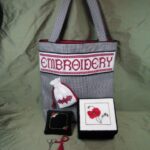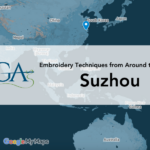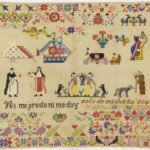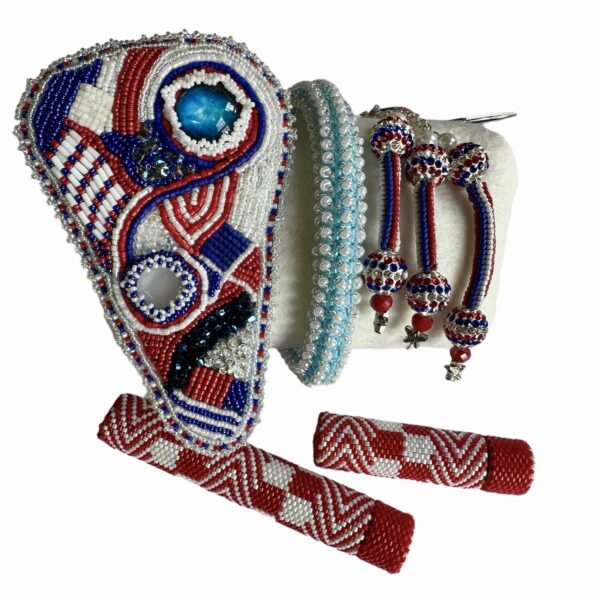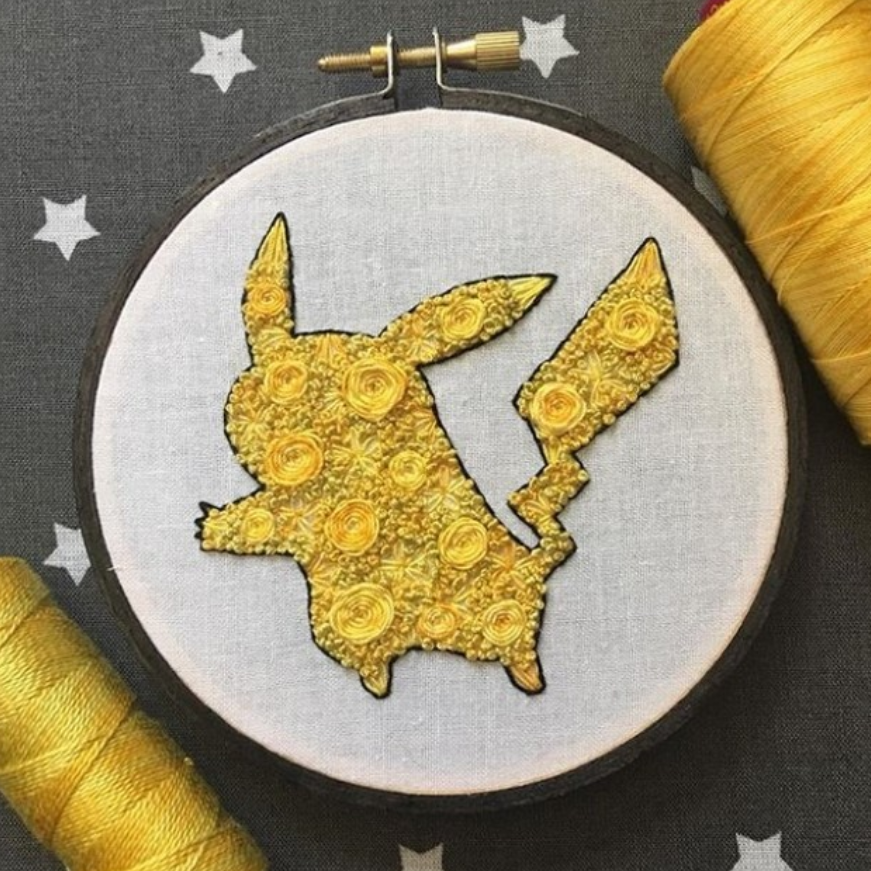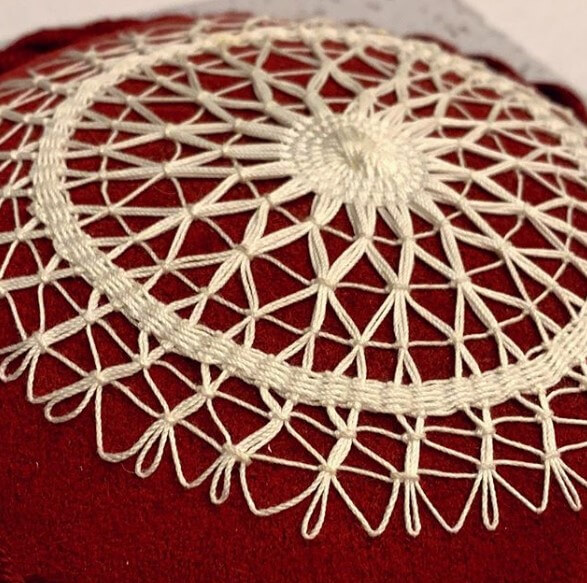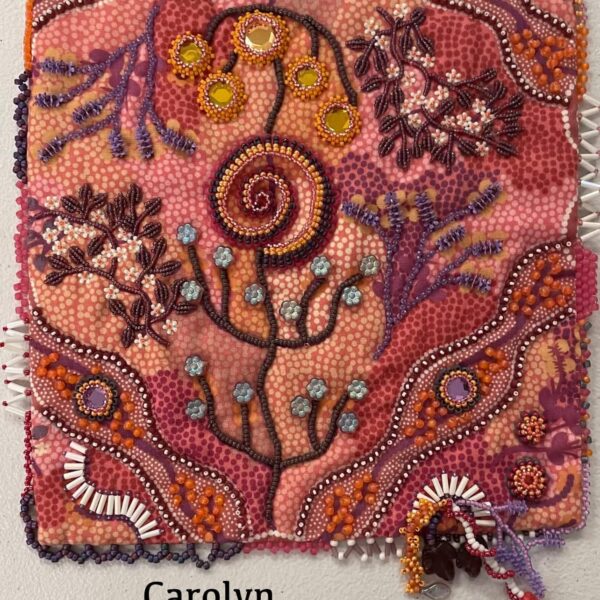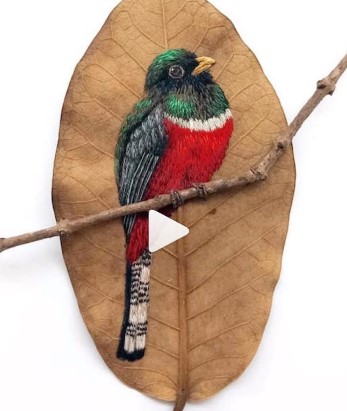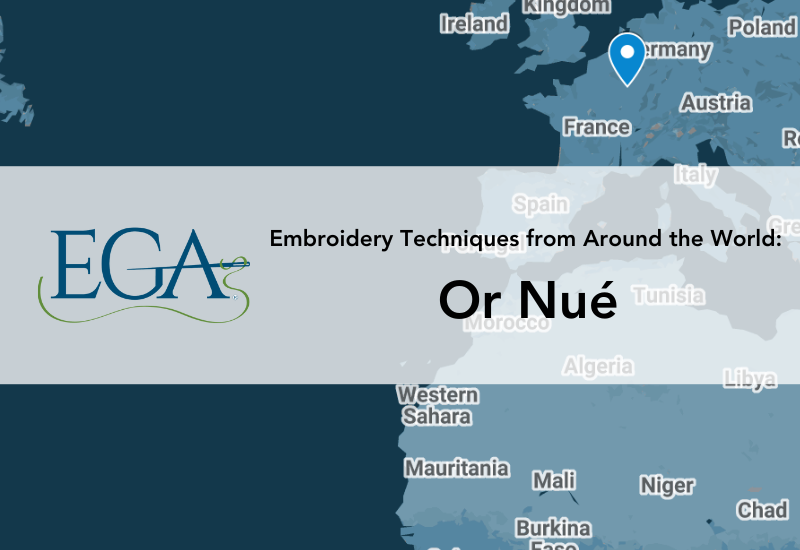
Technique: Or Nué
Place of Origin: Northwestern Europe (France, Belgium, The Netherlands)
Earliest known date: 15th century
History: Or nué, a French phrase that translates to “shaded gold,” originated in Northwestern Europe in the late Middle Ages. It has also been called the “Netherlandish technique,” as it was popular primarily in France, Belgium, and The Netherlands. Many of the finest Or nué embroideries that needleworkers can find in museums were later produced by Flemish and Italian embroiderers. As the name suggests, Or nué is a goldwork technique. It is perhaps one of the most complex, painstaking forms of goldwork, and it only became more sophisticated with time and the experience of expert goldwork embroiderers.
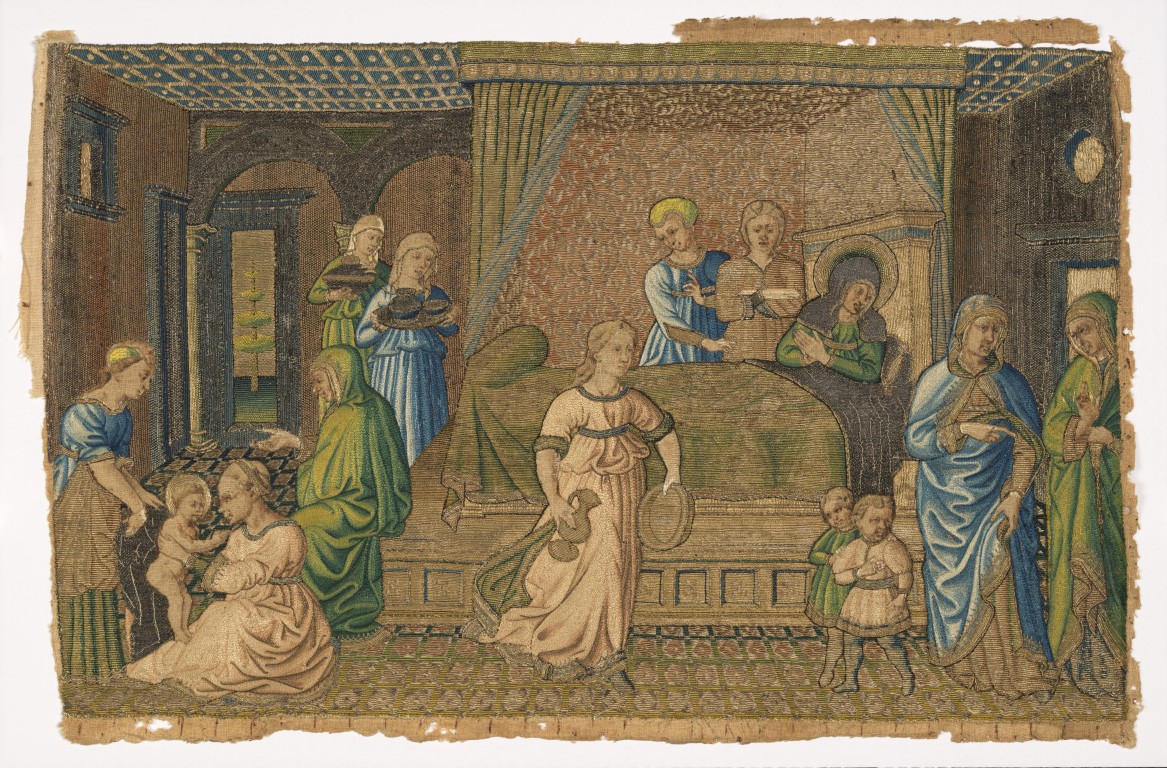
Copyright Metropolitan Museum of Art, New York, 32.4 x 49.5 cm.
Or nué pieces were primarily ecclesiastical in nature, depicting religious figures and biblical scenes and narratives, and used to decorate altar frontals (antependia) and ceremonial vestments, like chasubles, dalmatics, tunicellas, and copes, and their elements, like orphreys.
While Or nué is primarily known as a goldwork technique, it could also be considered a thread painting technique, given the method of layering colored silk threads over gold threads to lend sophisticated depths of color and shadowing to the details. In some cases, historical Or nué pieces were first painted by an artist, then given to embroiderers to stitch over.
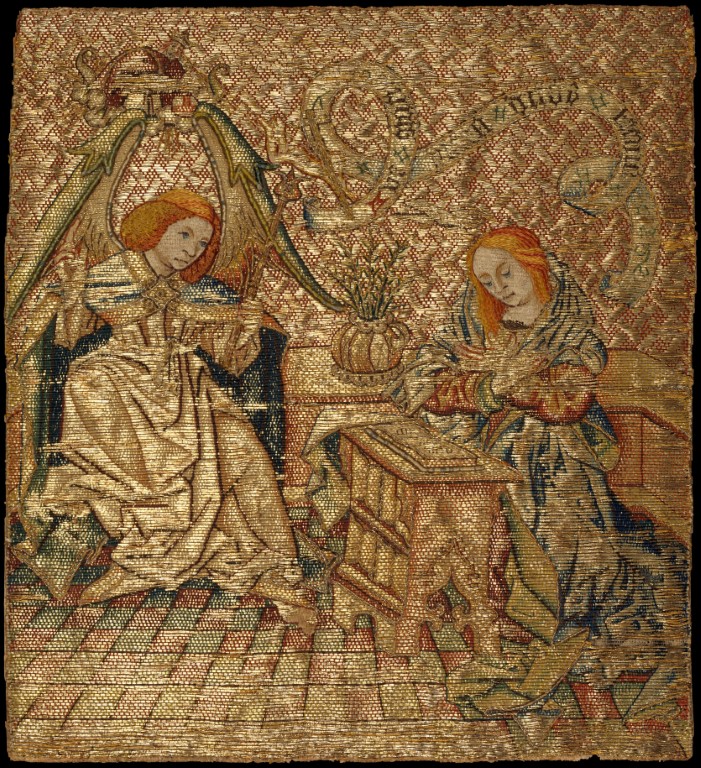
Copyright Metropolitan Museum of Art, New York, 21 x 9.5 cm.
Materials: Or nué is worked with colored silk threads and gold threads (like jap, usually a gold filament around a silk core), on a sturdy ground fabric with a tight weave, such as linen or cotton.
Techniques and Stitches: Or nué is worked by stitching colored silk threads over gold threads, couching the gold threads to the fabric. In a way, the gold threads become the ground fabric, with the layering of silk threads helping to create the three-dimensional scene. The density of the colored silk threads helps create depth and shading; areas with fewer silk threads allow the gold to really shine through and support the illusion of light and shadow.
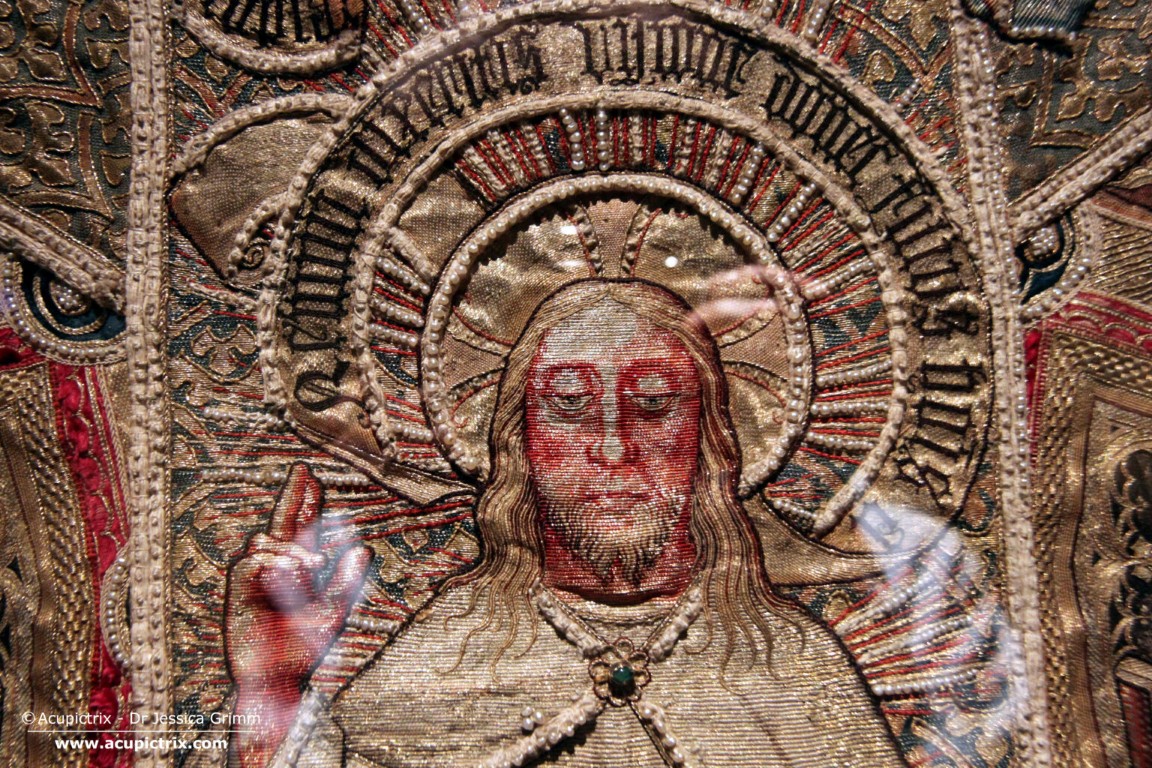
In modern examples of Or nué, the gold threads are worked in straight horizontal or vertical lines, with the silk threads stitched crosswise on top. Historical Or nué examples, however, show gold threads worked in many directions to flow with the design.
Learn more about Or nué and medieval goldwork embroidery in the Virtual Lecture, Embroidered Treasures from the Middle Ages at Agnani Cathedral, Italy with Dr. Jessica Grimm (Recording only available through January 12, 2026), in our Community Spotlight on Dr. Jessica Grimm, and by exploring Dr. Jessica Grimm’s website, Acupictrix. EGA also offers a Master Craftsman program for Silk & Metal Threads in which embroiderers can demonstrate their mastery in goldwork techniques.

Sources
(n.d.). Or Nué. Textile Research Centre. https://trc-leiden.nl/trc-needles/regional-traditions/europe-and-north-america/embroideries/or-nue
(n.d.). Order of the Golden Fleece: The embroidered chasuble. Acupictrix. https://acupictrix.com/order-of-the-golden-fleece-the-embroidered-chasuble/
(n.d.). Or Nué Goldwork. RSN Stitchbank. https://rsnstitchbank.org/stitch/or-nue-goldwork
(n.d.). Goldwork Technique: Or Nué Resources & Pictures. Needle ‘n Thread. https://www.needlenthread.com/2007/12/goldwork-technique-or-nue-resources.html
De Farcy, L. (1890). La Broderie, Du XIe Siecle Jusqu’à Nos Jours. https://uploads.teachablecdn.com/attachments/8SlrinfxSxCyuQQiiPdJ_Or+Nue+Translation++DE+FARCY.pdf
(n.d.). Class Notes on Or Nué Embroidery. Class Notes on Or Nué Embroidery. http://www.forest.gen.nz/Medieval/articles/embroidery/ornue.pdf
(n.d.). All That Glitters. The West Kingdom Needleworkers Guild. https://www.wkneedle.org/all-that-glitters/
